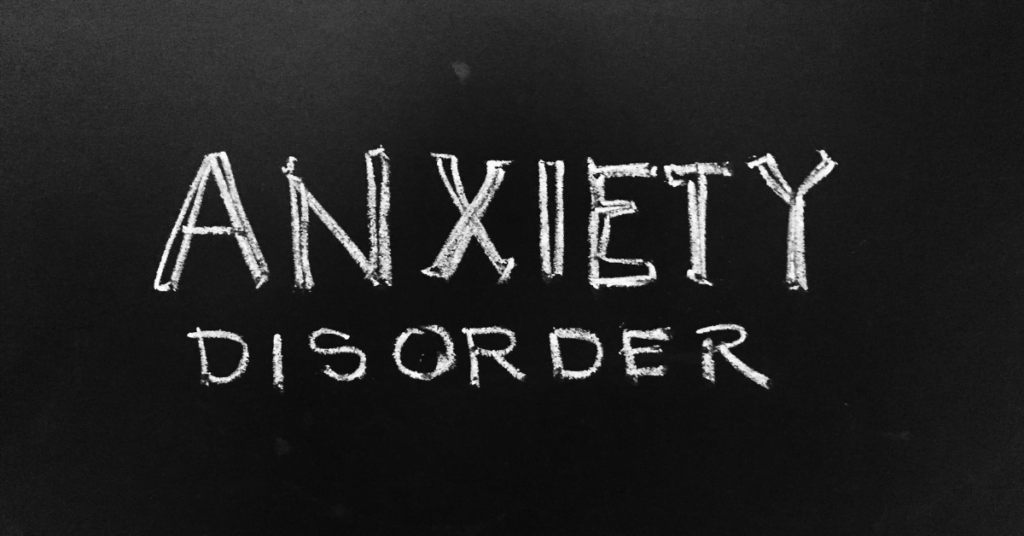Contents
What Is Anxiety?
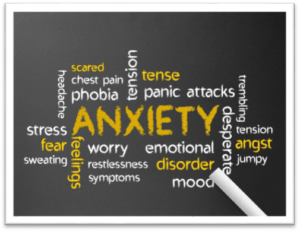 Anxiety is a mental disorder characterized by feelings of unease, worry, and generalized fear. It disrupts the person’s daily life. The cause of anxiety is not entirely clear, but it is believed to be caused by a combination of genetic factors and environmental influences. Anxiety may also occur as a side effect of some medications or as a result of overexertion or natural disasters. Anxiety can be mild or severe across different people and can range from one-time occurrences to chronic disorders with debilitating effects on an individual’s day-to-day living.
Anxiety is a mental disorder characterized by feelings of unease, worry, and generalized fear. It disrupts the person’s daily life. The cause of anxiety is not entirely clear, but it is believed to be caused by a combination of genetic factors and environmental influences. Anxiety may also occur as a side effect of some medications or as a result of overexertion or natural disasters. Anxiety can be mild or severe across different people and can range from one-time occurrences to chronic disorders with debilitating effects on an individual’s day-to-day living.
These are common symptoms associated with anxiety:
Restlessness, fatigue, difficulty concentrating, irritability, muscle tension (including headaches), sleep disorders (e.g., insomnia), nausea, or stomach problems (e.g., stomach pain) maybe some of the symptoms of acute stress disorder. Acute stress disorder may be triggered by a traumatic event such as an accident, natural disaster, war zone experience, or some other life-threatening event.
What Are The Anxiety Disorders?
Anxiety disorders are the most common mental disorders in the United States. They affect about 40 million adults and children and around 7% of children (ages 13 to 18) in a given year. Anxiety is a normal human emotion that helps humans deal with stressful situations. Anxiety disorders, however, are more severe than normal anxiety and can cause significant impairment in everyday routines. These people feel constant fear, worry, or unease, even when there is no obvious reason for concern.
The most common anxiety disorder is generalized anxiety disorder (GAD), which affects 6% of adults within any given year. Panic disorder affects about 2% of adults every year; obsessive-compulsive disorder (OCD) affects 2% to 3% of adults at some time in their life; social phobia may affect 5% of adults.
Anxiety is a broad term and encompasses a range of mental and physical symptoms and disorders. Anxiety disorder refers to any anxiety disorder recognized by the DSM-5, such as generalized anxiety disorder, specific phobia, social anxiety disorder, panic attack, obsessive-compulsive disorder, posttraumatic stress disorder.
Some causes of anxiety include genetics or past trauma reactions that have been inherited from one’s parents. In some cases, people may be born with a predisposition to developing an anxiety disorder. For some people, it may have been caused by being in an environment where they were constantly being put under pressure or were always on high alert.
Symptoms of Anxiety Disorders
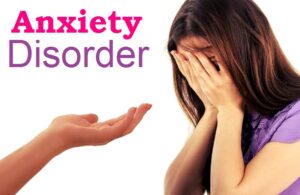 Anxiety disorders are mental illnesses that affect how a person feels, thinks, and behaves. It is the most common mental illness in the United States.
Anxiety disorders are mental illnesses that affect how a person feels, thinks, and behaves. It is the most common mental illness in the United States.
The symptoms of anxiety disorders can vary from person to person. Some people with an anxiety disorder may experience only one or two symptoms while others experience them all.
The following are some general signs and symptoms of anxiety disorders:
- Feeling restless and on edge
- Avoiding situations that may cause anxiety such as difficult conversations or social events
- Feeling tense or jumpy
- Having trouble breathing
- Sweating, nausea, and stomach pain
Types of Anxiety Disorders
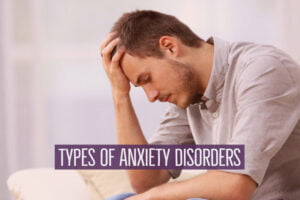 Anxiety is a feeling of worry, nervousness, or unease that causes a high level of emotional distress. It can be difficult to determine what type of anxiety disorder a person has. Because there are different types.
Anxiety is a feeling of worry, nervousness, or unease that causes a high level of emotional distress. It can be difficult to determine what type of anxiety disorder a person has. Because there are different types.
The most common types of anxiety disorders are generalized anxiety disorder, social anxiety disorder, obsessive-compulsive disorder, post-traumatic stress disorder, and panic disorder.
Generalized Anxiety Disorder
The individual may have intense feelings of worry and tension all the time and have difficulty controlling their emotions. They may experience physical symptoms such as muscle tension, sweating, dry mouth, trembling hands, or other bothersome symptoms. The person may also experience high levels of stress in everyday situations which leads to their increasing concern about how they will handle these situations in the future.
Social Anxiety Disorder
Social Anxiety Disorder is a type of anxiety that shows symptoms like an overwhelming fear of being judged, criticized, or rejected. This is one of the most common mental disorders in the United States.
Obsessive-Compulsive Disorder
Obsessive-compulsive disorder is a serious mental health condition in which people have uncontrollable thoughts that they feel the need to act on. For example, someone may have the obsessive thought of harming someone. They may then feel compelled to act on it, even though they realize these thoughts are irrational thoughts.
Post-traumatic Stress Disorder
Post-traumatic stress disorder is one of the most common mental health disorders in the world. In the US alone, as many as 8% of adults will meet the criteria for PTSD at some point in their lives.
Panic Disorder
There are many types of anxiety disorders. Panic disorder is one of the most common. It’s characterized by sudden and repeated panic attacks, periods of intense fear or discomfort which can be followed by physical symptoms such as chest pain, shaking, or trouble breathing.
Separation Anxiety Disorder
Separation Anxiety Disorder is a mental disorder that usually occurs in children and adolescents. It is characterized by excessive anxiety about separation from home or from those who the individual considers as protectors.
Children with Separation Anxiety Disorder can develop physical symptoms such as stomach aches, headaches, colds, and muscle pain. They may refuse to attend school for fear of being far from their parents or refuse to sleep alone because of worry or fear of something bad happening.
The disorder can sometimes lead to social isolation and depression because the individual spends most of their time worrying about separation and refuses to go out into public places due to a lack of parental supervision.
Phobia
A phobia is an intense and sometimes disabling fear of a specific object, activity, or situation that in reality presents little to no danger. We all generally avoid things (places, events, or objects) that make us uncomfortable but for those with a phobia, certain occasions create powerful reactions of irrational fear.
Causes Of Anxiety Disorders
The answer to this question is not simple. There are many factors that may lead to anxiety disorder including family history, personality traits, and environmental stimulation.
There are a lot of things that can cause anxiety disorders. Factors such as-
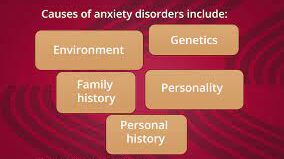
A person’s individual personality traits,
A family history of mental illness or trauma,
Environmental factors
- Genes
These all can all contribute to the development of an anxiety disorder. Anxiety disorders are one of the most common mental health disorders in the United States. Nearly 40 million adults in the United States have an anxiety disorder. Women are twice as likely to suffer from an Anxiety Disorder than men.
Diagnosis Of Anxiety Disorders
Anxiety disorders are among the most common mental disorders in the United States, with an estimated 18% of adults living with one or more anxiety disorders.
Anxiety disorders are not always easy to diagnose. For some people, anxiety can come and go without them ever knowing what triggered it. For others, certain situations or things they see every day can also cause anxiety. Some people may even have multiple triggers that lead to their anxiety disorder.
Anxiety Disorders take up six points on the American Psychiatric Association’s Diagnostic and Statistical Manual of Mental Disorders (DSM-5). The DSM-5 defines different types of Anxiety Disorders: generalized anxiety disorder, panic disorder, specific phobia, social phobia, separation anxiety disorder, and obsessive-compulsive disorder.
Anxiety is often accompanied by other mental health issues like depression and substance abuse disorder. An estimated one in five adults has an anxiety disorder. Anxiety can be triggered by many things, including stress at work, problems with relationships, or events that are unrelated to anything specific. The symptoms of anxiety are also different for everyone, but they often include physical symptoms like heart palpitations or chest pain.
The Challenges Of Living With Anxiety Disorders

Living with anxiety disorder can be difficult for adults and children, but it is very common. According to the National Institute of Mental Health, just over 18% of adults in the US have any anxiety disorder in a given year. And just over 14% of children aged 13-18 years old have an anxiety disorder at some point during their lifetime.
Anxiety disorders are a group of mental disorders characterized by an excessive, unrealistic, or uncontrollable fear that the individual will experience the anxiety situation again. Anxiety is a state of worry and fear about potentially dangerous future events. It can be categorized as an emotional disorder that is often caused by stress, which is then usually accompanied by physical symptoms.
But what are the challenges? Living with an anxiety disorder means that you are always “in your head” worrying about the future or things that may or may not happen.
Preventions Of Anxiety Disorders
Stress is an inevitable part of life. It’s not something that you can avoid or ignore, however, it is manageable. The two most important things you can do to manage your stress levels are identifying your stressors and finding ways to cope with them in healthy ways.
Understanding the sources of your stress is the first step to managing it appropriately. You don’t have to live in any situation you don’t like. But it’s best to be realistic about what you can change and what you have no control over. Once you have a better understanding of where your stress comes from. It will be easier for you to adopt a coping mechanism that works for you.
In order to achieve a healthy balance between our professional and personal lives. It is essential to make sure that we are taking time out of our day for both, and not neglecting one in favor of the other. One way we can do this is by making sure we aren’t overworking by setting limits on how many hours we spend at work each day. And then spending the other part of our time taking care of our health and well-being can include finding time for exercise. When we feel overwhelmed with work, it can affect our personal relationships. It’s important to find a balance between the two so that we don’t overwork ourselves or neglect our relationships.
Treatments Of Anxiety Disorders
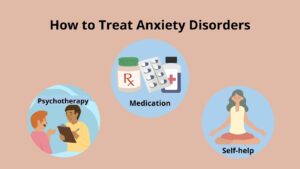
Anxiety disorders (AD) are a group of mental illnesses in which panic attacks and anxiety-related symptoms make it difficult for an individual to carry out normal daily activities.
While there is no single cause of AD, research has shown that certain factors may put individuals at higher risk for developing an anxiety disorder. These factors include genetics, personality traits, life experiences such as trauma or abuse, and temperament.
The treatment plan depends on the type and severity of the disorder. It can include medication, psychotherapy, or a combination of both. Some people find relief with lifestyle adjustments such as exercise and a healthy diet while others benefit from complementary therapies such as massage therapy and acupuncture.
Medication
Anxiety disorders are some of the most common mental health problems. There are cases where the symptoms only last for a short time. But other cases where they linger for years or even decades. Treatment of anxiety disorders is possible with medications.
Therapy
Anxiety disorders are one of the most common mental illnesses in the United States. They usually occur after a traumatic event and can cause sufferers to experience panic attacks, chronic anxiety, and obsessive worrying. The therapy for the treatment of these disorders is usually cognitive behavioral therapy. That has been proven to be effective with up to 80% of patients and has even been shown to be just as effective as traditional psychotherapy in some cases.
Self-help
The Anxiety and Depression Association of America state that anxiety disorders are the most common mental illness in America. The consequences include impaired relationships, adverse effects on work performance, and an increased risk for other illnesses such as cardiovascular disease. There are many stress-releasing techniques that provide relaxation to the mind and body.
Anxiety disorders are a group of mental disorders that consists of excessive and persistent anxiety that can interfere with daily living. While they tend to be less disabling than other psychiatric diseases, such as schizophrenia or bipolar disorder. They can still significantly impact a person’s quality of life.
For more information, please contact MantraCare. Anxiety is a common mental health condition characterized by persistent feelings of worry, fear, and apprehension. If you have any queries regarding Online Anxiety Counseling experienced therapists at MantraCare can help: Book a trial Anxiety therapy session
